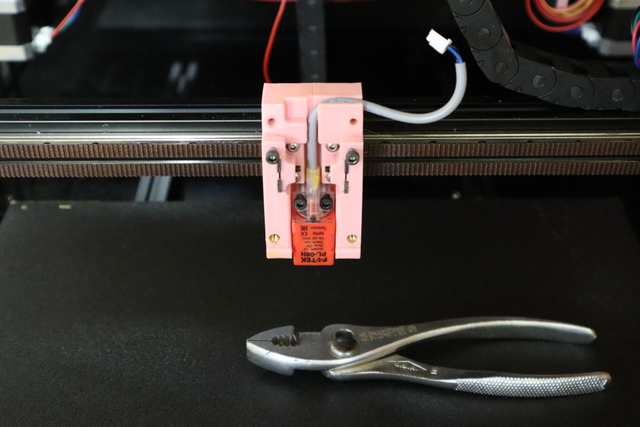I regard the next step in the foundation of consistent first-layer behavior as the repeatability of the Z probe.
The Z limit switch is used to set the height of the nozzle above the center of the build platform; but the Voron 2.4 has a separate Z stepper for each corner and uses the toolhead’s inductive Z probe to tram the gantry by reading the height above the platform at each corner of the printer and then adjusting the corners until the gantry is parallel to the build platform.
If the Z probe’s measurements are insufficiently repeatable, the tramming procedure may set the gantry out of parallel to the build platform, causing the nozzle-to-platform gap to vary (even on a perfectly flat platform, which I do not have) as the toolhead moves to different X-Y coordinates.
Klipper provides another macro to test the Z probe repeatability. Move the nozzle to a safe spot, call the macro, and it takes and reports several readings. It then moves the nozzle to the position where the probe was (according to the probe offsets in printer.cfg) — I don’t know why — so for repeated probe tests, move the toolhead back to the same spot before starting the next reading.
g0 x175 y175
probe_calibrate
Recv: // probe at 175.000,175.000 is z=4.185500
Recv: // probe at 175.000,175.000 is z=4.183000
Recv: // probe at 175.000,175.000 is z=4.180500
abort
g0 y175
probe_calibrate
Recv: // probe at 175.000,175.000 is z=4.195500
Recv: // probe at 175.000,175.000 is z=4.190500
Recv: // probe at 175.000,175.000 is z=4.190500
abort
...
Recv: // probe at 175.000,175.000 is z=4.203000
Recv: // probe at 175.000,175.000 is z=4.198000
Recv: // probe at 175.000,175.000 is z=4.198000
...
Recv: // probe at 175.000,175.000 is z=4.203000
Recv: // probe at 175.000,175.000 is z=4.198000
Recv: // probe at 175.000,175.000 is z=4.198000
...
Recv: // probe at 175.000,175.000 is z=4.203000
Recv: // probe at 175.000,175.000 is z=4.200500
Recv: // probe at 175.000,175.000 is z=4.200500
The standard deviation of these 15 samples is 0.0074 mm — as with the Z limit switch, repeatable enough to be adequate for first-layer performance. Expected, but good to confirm.
Note that this is again a test at ambient temperature. Repeatability needs to be confirmed at operating temperature as well; but I’m starting by removing the variable of heat and checking the bare minimum sensor behavior.
